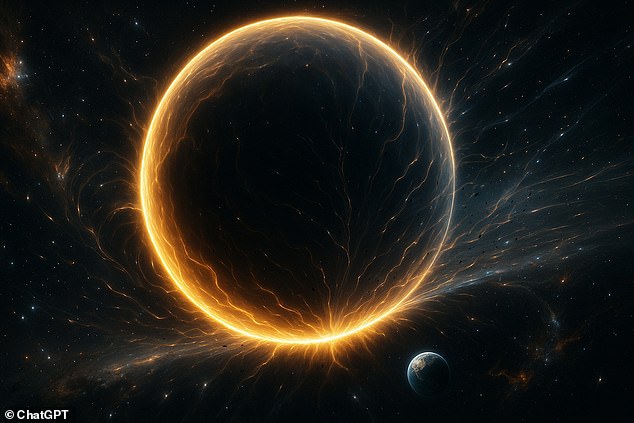
Cosmic Self-Destruct Button: Scientists Warn Universe’s Instant Cataclysmic End Could Erase Life
The Universe’s “Self-Destruct Button”: False Vacuum Decay
Scientists have proposed one of the most alarming doomsday scenarios for the cosmos: a built-in “self-destruct button” called false vacuum decay. If triggered, this phenomenon could obliterate planets, stars, and galaxies, rendering life impossible.
How Does It Work?
The universe’s fundamental fields may exist in a fragile “false vacuum” state—temporarily stable but not at their lowest energy level. Imagine dominos standing upright: a small nudge could trigger total collapse. Similarly, if any part of the universe transitions to its true vacuum state, a bubble of energy would expand at light speed, erasing everything in its path.
[IMAGE: A sphere of energy consuming galaxies, labeled "False vacuum decay bubble annihilating the cosmos (AI-generated)."]
The Science Behind the Threat
Everything in the universe strives for the lowest energy state. For example, coal (high energy) burns to ash (low energy). Some quantum fields, however, might be trapped in a false vacuum—like a marble resting in a bowl atop a stool. A push could send it crashing to the floor (true vacuum). The Higgs field, which gives particles mass, is suspected to be in such a precarious state.
[IMAGE: Marble-in-bowl analogy illustrating false vs. true vacuum states.]
Catastrophic Consequences
If the Higgs field drops to its true vacuum, a bubble of energy would form, releasing immense force. This bubble’s wall would travel at light speed, obliterating stars and planets instantly. Even worse, physics as we know it would collapse. Particles like electrons and quarks could gain new masses, dismantling atoms and chemistry essential for life.
[IMAGE: Artistic depiction of a cosmic wave destroying a galaxy.]
Triggers: Primordial Black Holes and Quantum Flukes
The Higgs field needs extreme energy to tip into collapse. Scientists theorize primordial black holes—tiny, dense relics from the Big Bang—could act as triggers. As these evaporate via Hawking radiation, they might “seed” vacuum decay. Alternatively, quantum fluctuations could randomly spark a collapse.
[IMAGE: Primordial black hole illustration with Hawking radiation.]
Has It Already Started?
A vacuum decay bubble might already exist in the cosmos. If formed far enough away, its light-speed expansion could take billions of years to reach us—or never due to the universe’s accelerating expansion. The absence of such destruction so far hints primordial black holes may be rare.
Why We’re (Probably) Safe
Dark energy’s role and the universe’s vastness offer some reassurance. Even if a bubble formed, chances are it might never reach Earth. Nevertheless, confirming the Higgs field’s stability remains a priority in physics.
[IMAGE: DESI cosmic map showing vast universe, implying safety in distance.]
In summary, while false vacuum decay presents a grim endgame, its likelihood remains speculative—for now. The universe’s mysteries, including dark matter and energy, may hold unseen safeguards, leaving the dominoes standing a while longer.
[IMAGE: Artistic Higgs field visualization with particles.]
(Word count: ~600)


